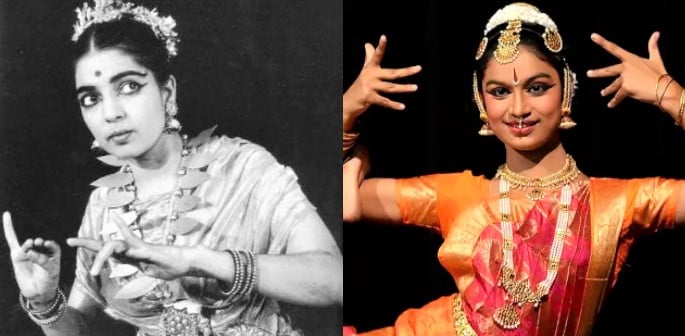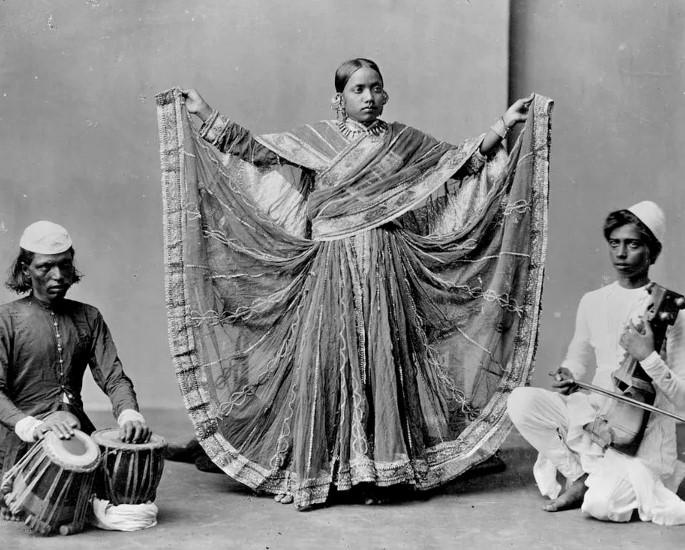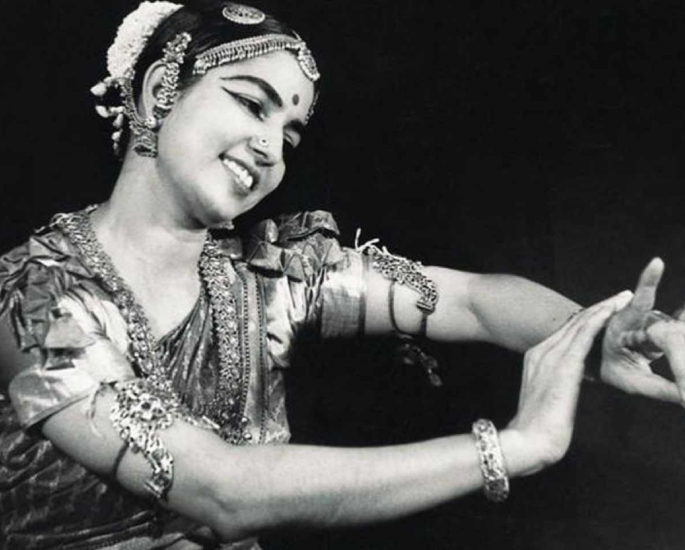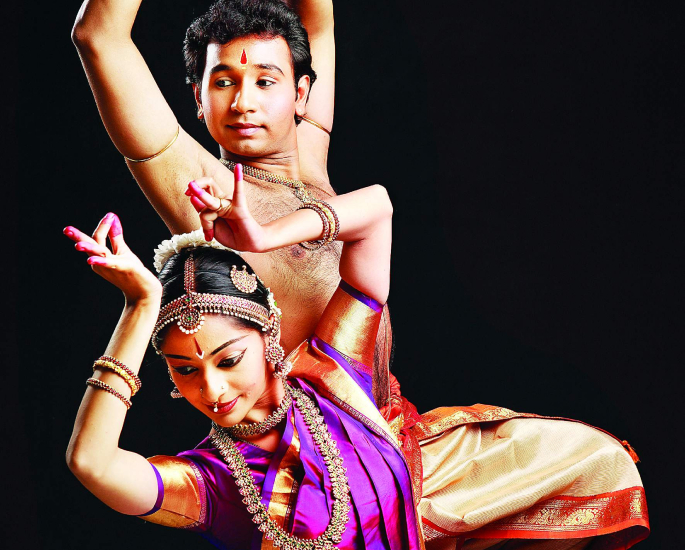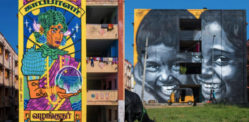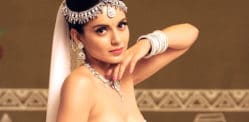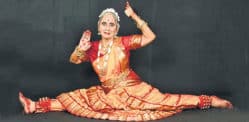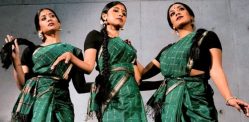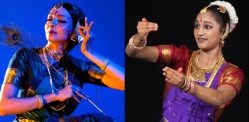The British deemed devadasis as prostitutes
The pre-eminent Indian classical dance form Bharatanatyam is presumed to be the oldest classical dance heritage of India.
Conventionally, Bharatanatyam was initiated in the temples of Tamil Nadu, being a solo dance performed only by women.
However, the dance form soon flourished across the country.
The theoretical base of Bharatanatyam traces back to Natya Shastra, the ancient Sanskrit text on performing arts.
The text describes these dancers as having excellent footwork and impressive gestures, with the performance repertoire including nrita, nritya, and natya.
Accompaniments include a singer, music, and particularly the guru who directs and conducts the performance.
Bharatanatyam also continues to inspire several art forms including paintings and sculptures starting from the spectacular 6th and 9th-century temple sculptures.
However, it’s important to recognise that the dance has a much richer history.
Whilst it is adored in modern India, and across the world, it’s faced several complications and was at one point banned during British rule.
So, how did Bharatanatyam form and revive itself into one of the most distinct dance forms in the world?
The History of Bharatanatyam
Bharatanatyam is believed to be over 2000 years old.
The dance style has been traced back to Ekaharya Lasyanga, a solo performance depicting themes of love and relationships which are also mentioned in the Natya Shastra.
According to legends, the Hindu deity Lord Brahma revealed Bharatanatyam to the sage Bharata.
Bharata then encoded the holy dance form in Natya Shastra.
The text which consists of thousands of verses structured in different chapters divides the dance into two specific forms.
The first is ‘nrita’ which is the dance comprising finesse, hand movements, and gestures.
The second is ‘nritya’ which is a dance consisting of distinct expressions.
As per the Russian scholar Natalia Lidova, Natya Shastra elucidates several theories of Indian classical dances.
These include the Tandava dance, standing postures, basic steps, bhava, rasa, methods of acting, and gestures.
One of the five greatest literary endeavours of Tamil Literature, “Cilappatikaram”, has a direct reference to this dance form.
Likewise, the Shiva temple of Kanchipuram which is decorated in carvings dating between 6th – 9th BC manifests the development of Bharatanatyam.
Many ancient temples are embellished with sculptures of Lord Shiva in Bharatanatyam dance poses.
The 18 arms of Lord Shiva are seen in drawings globally in hand gestures that are part of Bharatanatyam.
While the dance form was and continues to be acknowledged through historical and spiritual elements, it saw some pioneers who brought the stylings to life.
The illustrious quartet of Ponaiyah, Vadivelu, Sivanandam, and Chinnaiya – renowned as the Tanjore Bandhu, flourished between 1798 and 1832.
These visionaries were the architects of what we now recognise as modern-day Bharatanatyam.
Emerging from the village of Pandanallur, Meenakshi Sundaram Pillai stood as a beacon of Bharatanatyam expertise.
His distinctive style, aptly referred to as the Pandanallur school, became a hallmark of his legacy.
Devadasi Culture
With the origination of temples in Tamil Nadu, Bharatanatyam soon became an important part of South Indian temples.
It was between the 17th – 19th centuries that modern Bharatanatyam evolved and became what it is today.
Temple dancers, known as devadasis, were a large part of Bharatanatyam’s evolution.
Devadasis performed the dance form in Hindu temples for entertainment.
The devadasi nrittam was prevalent in ancient Indian temples and can be considered the precursor of modern Bharatanatyam.
The devadasis employed in the temples to please the Lords, Kings, as well as royal households, contributed much towards the perpetuation and preservation of this art form.
The Bharatanatyam as we see it today has grown from the various dances prevalent in South India.
The term devadasi attam is believed to have evolved from Thevar Adichie, Attam, meaning the dance of the Devas or Lords.
Eventually, devadasi culture became an integral part of rituals in South Indian temples.
Ancient texts and scriptures give evidence of the Devdasi culture and the presence of dancing girls in temple rituals.
There is also evidence of exclusive quarters for the girls on these premises.
Opposition & Ban
Colonial authorities’ skewed perceptions of Bharatanatyam led to a downward spiral of cultural suppression.
The dance, a repository of ancient wisdom and storytelling, was tragically cast as a symbol of “unseemly” behaviour.
The British, in particular, sought to assert their dominance by imposing their own values and perceptions onto the land they colonised.
They saw Bharatanatyam as “immoral”, often misinterpreting its rich narratives as suggestive or provocative.
This led to a gradual erosion of support for the art form and a growing social stigma against those who practiced it.
Traditionally, within the various Indian states, dances of a classical nature graced the sanctified environs of temples during ceremonies.
In South India, devadasis were supported by onlookers and in return received sexual benefits.
But, the British deemed devadasis as prostitutes as they couldn’t understand the cultural aspect of the dance.
As the British influence tightened its grip, the fate of Bharatanatyam became increasingly precarious.
Its decline was hastened by a series of legislations, such as the “anti-dance” laws of the Madras Presidency in the 19th century.
These regulations were enacted to curb what colonial authorities deemed as socially unacceptable dances.
In a heartbreaking twist of irony, Bharatanatyam, a vessel of culture and expression, was reduced to an illicit act in its own homeland.
However, the spirit of Bharatanatyam and the indomitable passion of its practitioners could not be so easily extinguished.
So, the dance form continued to survive in the shadows.
It found refuge in intimate gatherings, familial settings, and underground circles where its flames of tradition were kept burning, albeit dimly.
As the Indian struggle for independence gained momentum, so too did the reclamation of cultural identity.
Bharatanatyam, long suppressed and sidelined, emerged as a potent symbol of resistance against colonial hegemony.
The Comeback of Bharatanatyam
Amidst daunting challenges, a handful of families safeguarded the essence of Bharatanatyam, nurturing it through the darkness of suppression.
This revival showcased the remarkable fusion of Indian freedom fighters, intrigued western enthusiasts, and even those outside the traditional devadasi class.
They were all driven by an unwavering commitment to rescue Bharatanatyam from the brink of extinction.
Among these torchbearers was E. Krishna Iyer, a freedom fighter and legal luminary who donned the attire of a female performer, challenging societal stigma head-on.
His performances not only aimed to erase misconceptions but also ignited a fervent public interest in this art form.
Iyer’s visionary influence extended to the founding of the esteemed Music Academy in Chennai, a platform he used to showcase Bharatanatyam performances by devadasis.
The controversy surrounding the first event only fuelled the success of the second, earning Bharatanatyam the respect it deserved.
As public perception shifted, Bharatanatyam began to entice young artists from dignified Brahmin families, transforming it into a revered pursuit.
Kalanidhi Narayanan of Mylapore and Rukmini Devi of Adyar were two formidable women who played a pivotal role in reshaping societal attitudes and resuscitating the dance form.
A convergence of diverse influences paved Devi’s path – from her exposure to western ballet under Anna Pavlova’s legacy to her Theosophical upbringing.
Her marriage to Dr. George Arundale, a prominent Theosophist, enriched her understanding of India’s spiritual essence.
Rukmini Devi’s debut marked a turning point in 1935, as her visionary reforms transcended conservatism, validating Bharatanatyam’s spiritual significance.
Her creation of the Kalakshetra Institute became a beacon, attracting accomplished artists and musicians who collaborated to shape future generations of dancers.
Likewise, the Indian dancer Balasaraswati, rooted in the devadasi lineage, ardently upheld tradition.
She advocated for Bharatanatyam’s preservation against the backdrop of reforms.
Her commitment resonated, garnering immense acclaim for her authenticity.
With renewed enthusiasm sweeping through Indian society, nattuvanars reclaimed their roles as mentors, ushering in a new era of classical dance.
An array of styles emerged, each bearing the name of its native village, whether Pandanallur, Vazhuvur, or Thanjavur.
Guided by Rukmini Devi’s aspiration to unlock the dance’s spiritual essence, the Kalakshetra style crystallised as an embodiment of this vision.
In tracing the vibrant journey of Bharatanatyam, we find ourselves immersed in a timeless narrative of resilience, revival, and reinvention.
Yet, Bharatanatyam’s journey is far from static; it is an ever-evolving symphony that continues to harmonise tradition and innovation.
With each generation of dancers, choreographers, and enthusiasts, the dance form takes on new dimensions, new interpretations that breathe fresh life into its storied past.
Bharatanatyam serves as a reminder that our roots are not merely a thing of the past, but a source of inspiration that propels us into the future.
The evolution of Bharatanatyam teaches us that tradition is not stagnant.
Its ability to transcend time, language, and culture, is inspiring and shows just how dynamic the dance form has always been.



















































